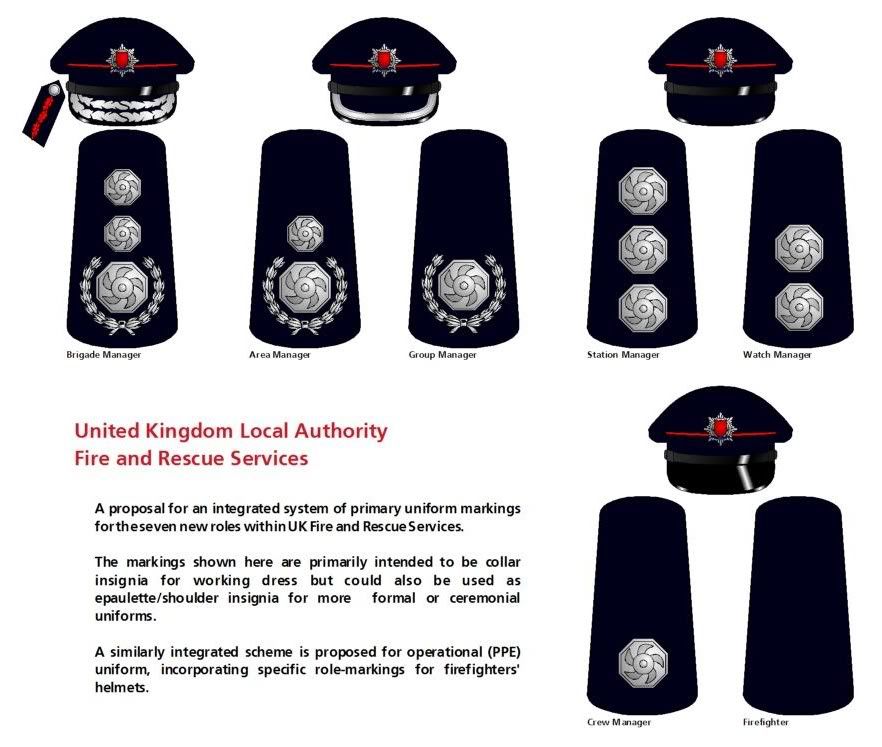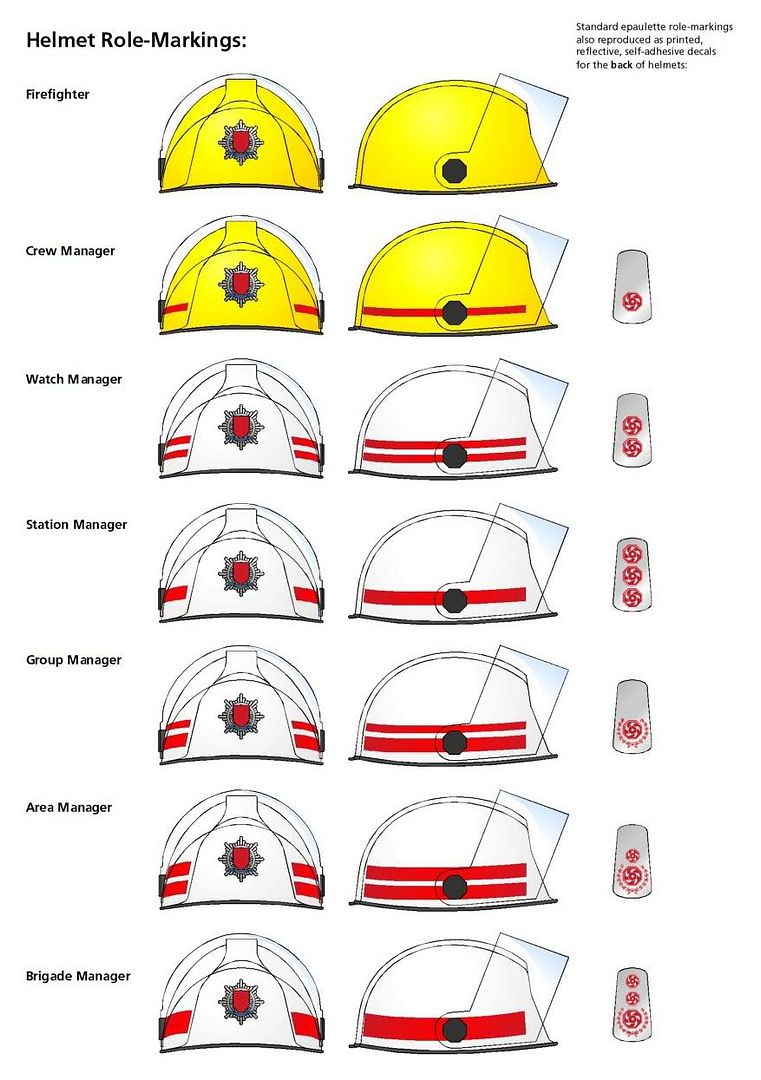Hi all, I'm a bit of a late starter here so please bear with me.
For all the rights and wrongs of Rank-to-Role it's here and it seems that FRS are going to have to learn to live with it.
It seems odd to me that the concept of rank-markings (sorry, ROLE-markings!) wasn't considered as an integral part of this process. Clearly it seems that there is a politcal will to try to remove the "paramilitary" appearance of FRS members that would put all managers in civilian business suits and operational members in undifferentiated working kit when not in PPE.
This seriously neglects the fact that, even with the move to roles, there is nevertheless an operational hierarchy and a genuine need to be able to recognise seniority of leadership within the organisation as well as on the incident ground. FRS *are* uniformed services and the public accept that. Other services need to be able to identify senior officers (I suppose we should call them managers now!). I don't see the police giving up their rank-markings anytime soon and although NHS ambulance services can be a bit variable as to what's actually worn (they've had exactly the same problems as FRS in this regard), the same general principles seem to apply.
If rank/role-markings are a desirable thing to have then surely it would make sense to try to have a scheme that is easy to follow for all FRS members and also intuitive to members of other services outside the FRS. What we have at the moment seems to be a bastardised scheme that retains some of the old
rank-markings and fudges them a little bit with the new
roles. My guess is that, at a National level, the great and the good are trying to work out how to fit the square peg of operational role recognition into the round hole of the all-new,
non-paramilitary FRS. In time, I suspect that an all-new new and updated scheme of markings will be released, along with copious guidelines as to exactly how and where these should be used and applied! I for one have no problem with some form of role-marking being used on working kit. Let's face it, in many FRS the standard working rig for all roles is now the same for all members, with the addition of small clip-on collar patches where required. I see no reason why that couldn't continue.
On a side note, whether or not the full Undress Uniform, complete with tunic and cap (plus embellishments!) continues to be used in the long-term remains to be seen. I suspect that the current undress uniforms will ultimately vanish entirely (think of the cost savings... !). Personally, I don't see why it shouldn't be retained for use on formal occaisions when representing one's service; uniform clearly *would* be appropriate attire but working kit would also clearly be inappropriate. That's why I've continued to include these additional details in the proposals for now.
My intention was to NOT follow the new guidelines directly but to come up with what was essentially a whole new system, although I wanted one that was derived from existing traditional elements and would therefore be recognisable and understandable. I decided to use the "impeller" as the basic emblem of role as this is uniquely identified with FRS. Given the changes in R2R, it seemed reasonable to have a simple, integrated, sequential system that began at the bottom and worked its way up in simple, obvious steps. For example, the use of TWO bars for "crew manager" seemed a little pointless given that there was no longer a need to differentiate such an individual from someone wearing ONE bar - hence my use of a single impeller instead.
My suggestion would be to have the markings for Area Manager as [large impeller & wreath + one small impeller]. I believe this makes for a more obvious sequential progression from Group Manager to Brigade Manager than the current guidelines suggest, although AM should probably have plain silver peak embroidery and no lapel insignia, where caps and tunics are worn.
I've only shown one set of markings for Brigade Manager but, assuming that there should be *some* differentiation within this role between the BOSS (Chief Executive or however titled, where operational) and the "assistant" brigade managers (essentially the old DCFO and ACFO posts lumped together) then it might be appropriate for individuals in these two "sub-roles" to wear slightly different markings. One possibility would be to give the "assistant" brigade managers [large impeller & wreath + TWO small impellers] and to give the BOSS [large impeller & wreath + THREE small impellers]. This would be the most obvious way to maintain a simple progression of markings without adding in extra elements like "bars." For completeness, I would continue to associate these with the traditional cap embellishments of silver oak-leaves (thistles in Scotland) using one and two rows respectively. Lapel insignia would continue to be differentiated in the same way as the old rank insignia.
Anyway, these are my own thoughts - they're not a
million miles from the current usage but I've tried to pull it all together into a new, integrated structure that modernises the old rank scheme but also retains the best of the recognisable traditional elements. I apologise if the images are a bit large.
The helmet markings would be reflective and the black comb for white helmets would no longer be essential as the red bands are now specific to each role, without overlap (no danger of mistaking Stn O for LFf, as was). I have deliberately used a VERY non-specific helmet shape as I realise that there are loads of designs and manufacturers out there but I hope you can see the general idea. I'll post a better version when I can.
Please feel free to comment - if you're interested, I can up-date this to take account of your suggestions.
Is this the sort of thing you feel FRS should be aiming to have?





